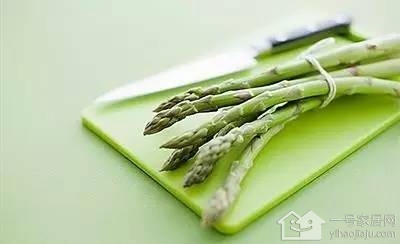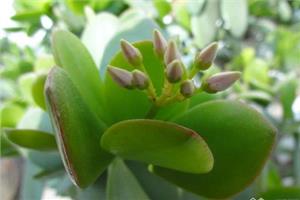A brief introduction to asparagus the nutritional composition of asparagus
Compared with familiar vegetables such as Chinese cabbage and leek, people have limited knowledge of asparagus. Let's look at asparagus and see what kind of plant asparagus is.

Asparagus, also known as asparagus, is a perennial herb belonging to Asparagus genus (Asparagus genus) of Asparagus family.
Asparagus, scientific name asparagus, is a spring vegetable, perennial flowering plant. Like its cousins leek, onion and garlic, it was once placed in the lily family. But the lily family has been split up, and the onion plants are now placed in the genera Lycoris and Asparagus (Asparagus) of the asparagus family.
Asparagus is native to most of Europe, as well as North Africa and Western Asia, and is a widely cultivated vegetable crop. Even if the production area is different, in fact, no matter which asparagus variety, as long as it is exposed to sunlight, it will turn green asparagus, buried in the soil or blocked from sunlight, it will make asparagus white. Taiwan asparagus is difficult to compete with European white asparagus in tenderness, perhaps because Taiwan's high spring and summer temperatures tend to make asparagus cell walls rapidly thicken and lignify to a higher degree, so it is somewhat far from soft and tender, and often needs to be peeled.
What does asparagus taste like?
Asparagus has a delicious and aromatic flavor, characterized by cold, sweet and bitter. Dietary fiber is soft and delicious, can stimulate appetite, help digestion.
Nutrient composition of asparagus
Asparagus has higher nutritional value than ordinary vegetables and is a high-grade health vegetable.
1. Asparagus is rich in vitamin B, vitamin A and folic acid, selenium, iron, zinc and other trace elements. Studies have shown that as long as each person eats 200 grams of fresh green asparagus per day, it can meet the needs of the human body for the above nutrients.
2. Asparagus contains rutin, asparagus saponin and other nutrients that are not found in other vegetables. These nutrients are effective in preventing cardiovascular and cerebrovascular diseases and cancer, and are valuable for human health care.
3. Modern nutrition analysis, asparagus has a variety of amino acids necessary for the human body, the content ratio is more appropriate, inorganic salts have more selenium, molybdenum, magnesium, manganese and other trace elements, but also contains a large number of asparagine as the main body of non-protein nitrogen-containing substances and aspartic acid.
4. Asparagus is a low-calorie, high-nutrient vegetable with amazing levels of antioxidants, immune cell promoters, growth regulators for normal cells, and elements such as manganese, zinc, copper and iron essential for human health.
5. Asparagus is rich in folic acid. Eating asparagus can supplement folic acid and is an important source of folic acid supplement for pregnant women.
What plant is asparagus? What smells? After the introduction of the article, you also know more about asparagus, know that asparagus is a very nutritious plant, and know that eating asparagus often has a very good effect on the body. Asparagus is rich and varied, not only suitable for western food, but also very suitable for Chinese food, such as fried meat, soup, cold salad and so on. However, although asparagus is very good, people also need to remember not to eat too much when eating, if eating too much at once may bring adverse effects.
The above is the relevant introduction of this article, I believe you have read this also have a simple understanding, if necessary, you can continue to pay attention to No. 1 home network, to learn more information.
- Prev

What kind of plant is the swallow palm? matters needing attention in the culture of swallow palm
What kind of plant is the swallow palm? matters needing attention in the culture of swallow palm
- Next

Promenade plants placed to create a good environment for the porch home
Promenade plants placed to create a good environment for the porch home
Related
- Wuhan Hospital Iron Tree Blooming Result Was Instantly Frightened by the Gardener Master
- Which variety of camellia is the most fragrant and best? Which one do you like best?
- What is the small blue coat, the breeding methods and matters needing attention of the succulent plant
- Dormancy time and maintenance management of succulent plants during dormancy
- Minas succulent how to raise, Minas succulent plant pictures
- What are the varieties of winter succulent plants
- How to raise succulent plants in twelve rolls? let's take a look at some experience of breeding twelve rolls.
- Attention should be paid to water control for succulent plants during dormant period (winter and summer)
- Watering experience of twelve rolls of succulent plants
- Techniques for fertilizing succulent plants. An article will let you know how to fertilize succulent plants.

